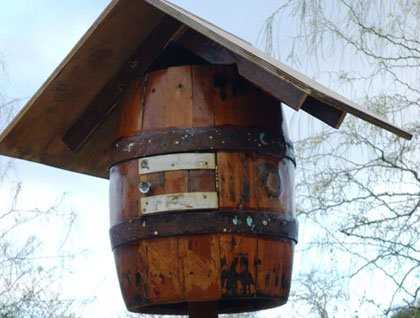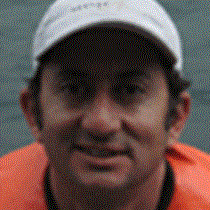Today we visited Floreana, also known as Charles Island, at the southern edge of the Galapagos archipelago.
We started early, making our first visit before breakfast. We landed at the green, olivine beach of Punta Cormorant. As we were walking inland, just beyond a narrow stretch of salt bush, we found a large number of Greater Flamingos. These beautiful birds moved slowly and gracefully while feeding at the bottom of a brackish lagoon, some of them noisily calling, proudly sporting their pink and orange colors. While we followed our trail the flock started to show their social breeding behavior, parading with short steps while moving their heads from side to side. What a way to start the day! The seasonal greenery of the forest was the perfect setting to observe other bird species like the Galapagos flycatcher and many nesting and displaying Darwin’s finches. We returned at around 8:00 a.m. for breakfast while the National Geographic Endeavour relocated to the offshore islet of Champion.
As we arrived to Champion we boarded our tenders to ride near the rocky shores where the resident Galapagos sea lions quietly basked or lazily swam. Swallow tailed gulls, blue footed boobies, brown noddy terns and red billed tropicbirds also use this area for nesting or resting, dotting the layers of lava with life. We then went back to the ship to change and collect our gear in order to come back for snorkeling, to drift in the current to meet the young sea lions and many sea turtles on their own environment. The current had brought harmless medusa and clusters of fish eggs, providing vast amounts of food for these marine reptiles. We had to get out of the water by noon, which was not an easy task since the conditions were perfect – the visibility unlimited with plenty of sunlight. We returned onboard for a much deserved lunch… and some rest.
In the afternoon we went to the Post Office Bay, the location of a famous barrel used as a mail system which was set up by the first whalers back in 1793. We landed to look thorough the cards and letters that had been left there by fellow travelers and explorers, and to be part of a unique and long standing tradition. As we returned onboard we had the second tender ride of the day. This time we negotiated our way through La loberia (sea lion colony), with its magnificent prickly pear cacti sprouting directly from the basaltic substrate, living close to mangroves and salt resistant plants. This afternoon we were lucky to have had an encounter with three Galapagos penguins, resting near the water line and surrounded by sally light foot crabs and cheeky sea lion pups.
Our last leg, the final return trip to the National Geographic Endeavour had some stingrays and more turtles conspicuously basking for the last rays of the sun, the end of another amazing journey on one of the most spectacular island groups of the world.







